Lives torn apart by fatal crashes on the A9, Scotland’s longest road

[ad_1]
BBC Scotland News
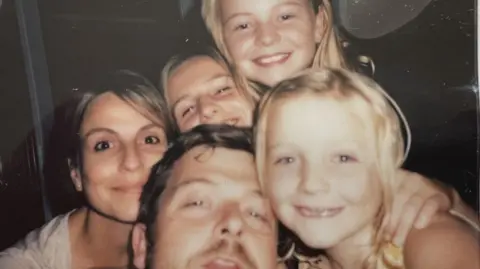 Chris Strong
Chris StrongA dream trip to Scotland ended in tragedy for Chris Strong’s family.
His wife Katie had travelled from the US to the Highlands with her brother and their mother to visit locations from their favourite TV show, Outlander.
But they never came home. All three were killed in a crash on the notorious A9 in August 2022.
Their deaths were another statistic in the grim history of Scotland’s longest trunk road.
A total of 48 people have lost their lives on the 113-mile stretch between Inverness and Perth in the last 10 years.
The road regularly changes from single to dual carriageway. Drivers can often be seen driving at excessive speeds to overtake lines of slower-moving vehicles, and at certain junctions cars have to turn right across traffic coming the other way.
The work to dual the remaining single-carriageway sections was originally due to be finished by 2025 – but that deadline has slipped by a decade to 2035.
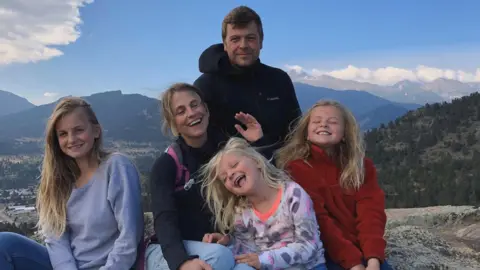 Chris Strong
Chris StrongChris Strong, who lives in Chicago with the couple’s three daughters, has told BBC Alba’s Eòrpa programme of the painful lasting impact of the deaths.
He said his wife Katie was “the glue that held all the great elements of our families together”.
“She was beautiful, and she was the hardest working person I’d ever met,” he said.
“She never sat still and was so ambitious and was always learning and always in school. She was always taking care of people.”
Chris, a photographer, says he keeps memories of Katie and her family alive.
“We try to talk about her a lot. I feel like she’s still a presence in our home.”
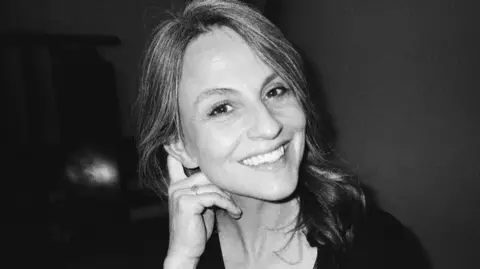 Chris Strong
Chris StrongKatie was 46 when she visited Scotland with her 45-year-old brother, Jared Bastion, and their mother, Mary-Lou Mauch.
They were all fans of Outlander, which they had watched together while caring for their late father David while he suffered with dementia.
During their trip they had visited Culloden Battlefield near Inverness, one of the locations from the show.
They were on a single carriageway section of the A9 south of Aviemore when their car was involved in a collision with a lorry.
Mary-Lou and Jared died at the scene. Katie, who was driving the car, died in hospital four days later.
The lorry driver was not hurt.
Chris said: “I don’t know why it happened.
“She was going to make a right-hand turn off of the A9, and she turned right in front of a lorry.”
Chris got the next plane to Scotland after he found out about the crash.
Katie was receiving treatment in a hospital in Dundee.
Chris said: “I was able to get there in time to see her. She was on a ventilator.
“I got to spend maybe 24 hours with her.
“Then they did tests and determined that she was not going to come back.”
Head-on collision
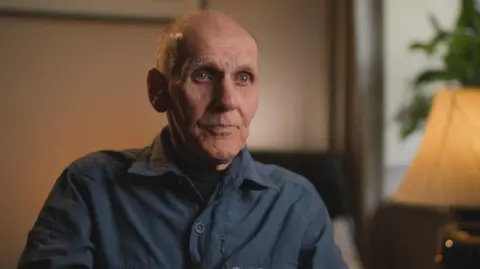
Others have experienced tragedy on the A9 first-hand.
Ronnie Weir, who lives only a few metres away from the road in Dowally, Perthshire, was involved in an accident in April 2017.
He was driving home from Pitlochry when a car came towards him on the wrong side of the road. They collided head-on.
The driver of the other vehicle had suffered a cerebral hemorrhage and died at the wheel before the crash.
Ronnie, who suffered leg injuries, said he felt the effects of the accident every day.
“The trauma which an accident causes is horrendous. Sometimes it is difficult to speak about it,” he said.
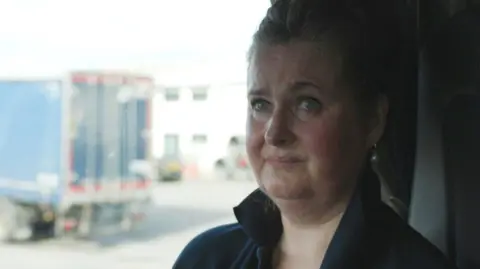
Lorry driver Elaine MacKenzie is a regular user of the road – and says she prays every time she sets out on the A9.
She said: “I pray for myself, for my lorry, but also for everyone else with me too – for everyone on the A9, but especially for the lorries.”
Elaine believed there were lots of factors behind accidents on the A9.
She said some drivers did not understand the road signs, while others tried to overtake her lorry in dangerous places.
“If the road was dualled all the way from Inverness to Perth it would be very different,” she added.
“Because then cars could overtake me if they wanted, and you wouldn’t have to be worried.”
A total of 48 people died between 2014 and 2024 after collisions on the A9 between Inverness and Perth, according to Scottish government data which Eòrpa received through Freedom of Information.
More than 80% of those who lost their lives had been on parts of the road that were not dual carriageway.
Over the same 10 years, 558 other people were involved in collisions. More than 80% of them were on sections which were not dualled.
The SNP made a commitment in 2007 to dual the A9 from Inverness to Perth, and in 2011 the Scotish government set a target date of 2025.
But in February 2023, ministers admitted that finishing the £3bn project by then was “unachieveable”.
Ten months later, the government said that completing the work had been delayed by 10 years until 2035.
At the time the transport secretary, Mairi McAllan, said that a new rolling programme of improvements was “achievable” and there would be “no let up” in the work.
Two sections of single carriageway totalling 11 miles (18km) of road have been upgraded over the past decade – but 77 miles of the route has still to be dualled.
A9 Dual Action Group campaigner Laura Hansler, who lives near the road where it passes through the Cairngorms, said she knew the road building project was complex.
But she added: “Every time there is a delay… you’re basically going to cause someone else and another family to lose their loved one on this road.”
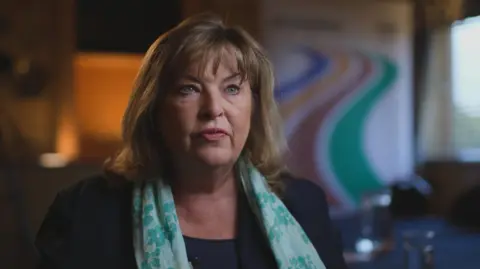
Transport Secretary Fiona Hyslop said she understood there were frustrations around the dualling of the road.
“Any loss of a life on the A9, or indeed other roads in Scotland, is a tragedy in and of itself,” she said
“Road safety is something I take extremely seriously.”
She said the government was not just waiting for the dulling to take place, and had invested £5m in interim, shorter-term road safety issues on the A9.
“The dualling in and of itself will help on road safety and that’s one of the reasons that we’ve embarked on it,” she said.
Hyslop said circumstances beyond the Scottish government’s control had affected the project, including Brexit – the UK’s withdrawal from the European Union – and the Covid pandemic.
But she added: “We have a plan, we’re meeting our milestones.”
[ad_2]



